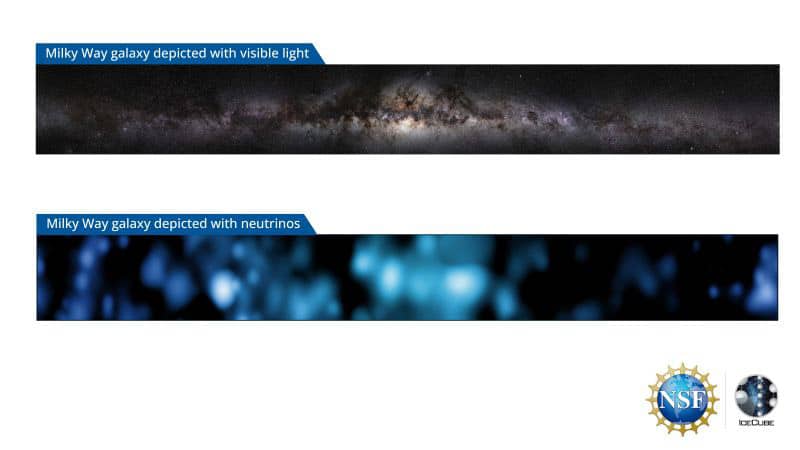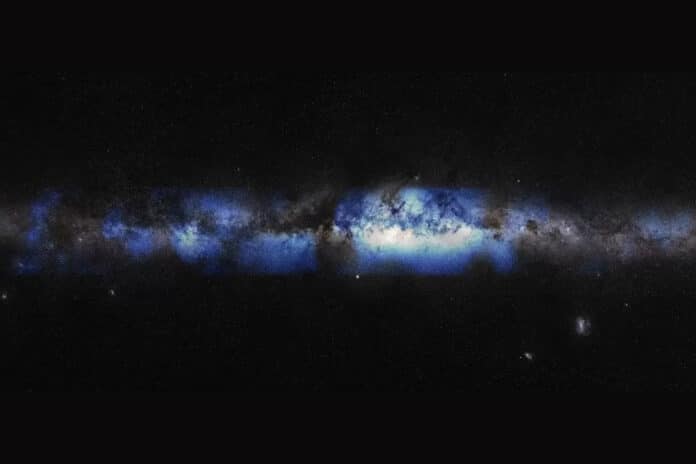Observations of neutrinos have shown that they mostly emerged from extragalactic sources such as active galaxies. However, gamma-ray observations show bright emissions from within the Milky Way galaxy. Astrophysical gamma rays and neutrinos are expected to be produced by the same physical processes.
A collaboration of researchers using the U.S. National Science Foundation-supported IceCube Neutrino Observatory at NSF’s Amundsen–Scott South Pole Station in Antarctica recently achieved a small breakthrough: They determined the cosmic origin of thousands of neutrinos—invisible “ghost particles” that exist in large quantities but typically pass straight through Earth undetected—to present a different view of our galaxy.
First of its type, the neutrino-based image of the Milky Way is a galactic portrait created using particles of matter instead of electromagnetic energy. The massive observatory uses thousands of networked sensors buried deep within a cubic kilometer of clear ice to find the minute signals of high-energy neutrinos coming from space.

Drexel University physicist Naoko Kurahashi Neilson said, “I remember saying, ‘At this point in human history, we’re the first ones to see our galaxy in anything other than light.”
Denise Caldwell, director of NSF’s Physics Division, said, “As is so often the case, significant breakthroughs in science are enabled by technological advances. The capabilities provided by the highly sensitive IceCube detector and new data analysis tools have given us an entirely new view of our galaxy — one that had only been hinted at before. As these capabilities continue to be refined, we can look forward to watching this picture emerge with an ever-increasing resolution, potentially revealing hidden features of our galaxy never before seen by humanity.”
Francis Halzen, a physicist at the University of Wisconsin–Madison and principal investigator at IceCube, said, “What’s intriguing is that, unlike the case for light of any wavelength, in neutrinos, the universe outshines the nearby sources in our galaxy.”
Locating neutrinos’ origins is much more difficult than simply detecting them (and differentiating them from other types of interstellar particles), which is a famously difficult task. IceCube can detect the weak patterns of light that result from the infrequent interactions of neutrinos with the ice underneath it. Scientists can identify the source of the neutrinos by analyzing specific patterns of light that are very directed and point to a specific region of the sky.
Kurahashi Neilson said, “Other interactions are far less directional and produce cascading “fuzz balls of light” in the clear ice. They developed a machine-learning algorithm that compared the relative position, size, and energy of more than 60,000 neutrino-generated cascades of light recorded by IceCube over ten years.”
Journal Reference:
- Icecube COllaboration. Observation of high-energy neutrinos from the Galactic plane. Science. DOI: 10.1126/science.adc9818
